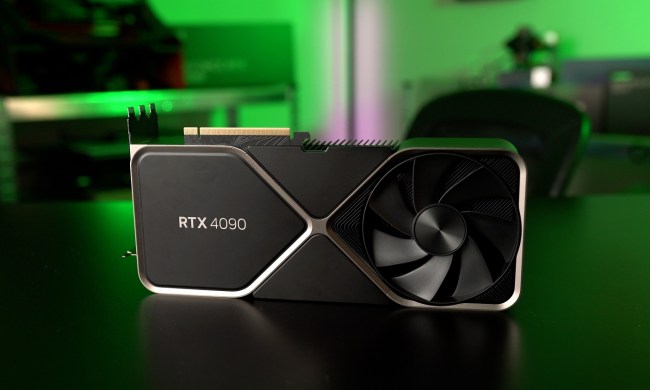RTX-washing. It’s our term for old PC games that have received glossy ray tracing effects. It’s certainly makes for a neat tech demo, but if you’re like me, you might wondering if there are any other benefits.
For Nvidia, it’s clear why the company has invested in these games. After all, owning the most powerful GPU in the world isn’t very exciting without some games that can take advantage of it — and without these RTX-washed games, the RTX 4090 faces that situation.
As we’ve quickly discovered, though, these RTX-washed games aren’t helping the situation as much as Nvidia probably thinks.
A fresh coat of shiny
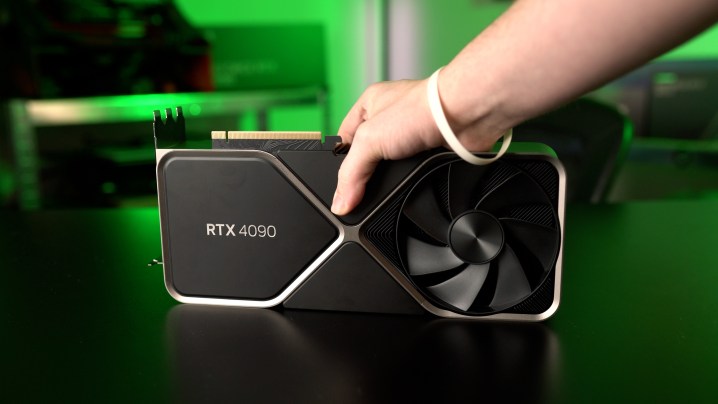
At its recent GTC showcase, Nvidia used a handful of games and demos to showcase its new RTX 4090 GPU. These included the upcoming Cyberpunk 2077 Overdrive mode, which cranks up the ray tracing to previously impossible levels; an unplayable Racer RTX demo; and Portal RTX, a version of Portal redone with Nvidia’s new RTX Remix modding tool.
All of them featured dynamic lighting and lots of shiny surfaces, and that’s all well and good if you’re trying to push a new ray tracing-centric GPU. But none of these are new games. The revamped Cyberpunk, at least, might give first time players a new way to enjoy Night City, but Portal RTX is much more of an egregious retcon.
The original Portal might be relatively old at this point, but it still has a unique look and feel to it. It’s dirty, grungy, even a little low poly by today’s standards. That gives it a real charm, and as many Portal fans have pointed out, that look and feel is entirely missing in the highly reflective corridors of Portal RTX.
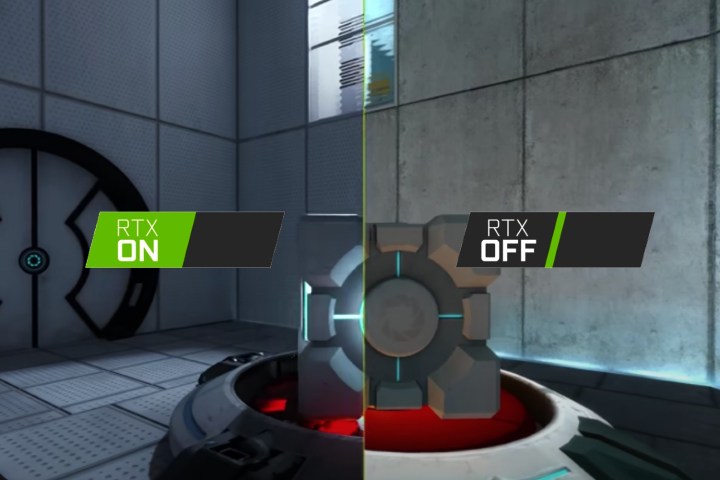
That vibe is a big part of the Portal lore, too. “What is this place?” you ask yourself the first time you step into a test chamber. It’s clearly rundown, and as becomes clear over the course of the game, hasn’t had human intervention for a very, very long time. That’s why it looks the way it does. In contrast, Portal RTX would have needed to have GLaDOS scrubbing and polishing the floors every day to achieve such a state of reflective cleanliness.
Not to mention that the portal-supporting walls of test chambers are supposed to be partly made from moon rock. In Portal RTX, they’ve been given a new texture which makes them look sort of ceramic. But whatever they are made from, it’s very clear that they aren’t made from the same stuff. Portal RTX is lore-breaking.
But to Nvidia, that doesn’t really matter. Portal RTX isn’t an attempt to make the definitive version of Portal, despite that being how Nvidia is marketing it. It’s an attempt to create a game so demanding that you’d need an RTX 4090 to play it as Nvidia intended. But you can’t play it as the original developers intended, because Portal RTX isn’t Portal any more. It’s Nvidia’s attempt at building a “Can it run Crysis?” experience by generating a tech demo from the corpse of a great game to do it.
As far as I’m concerned, that leaves a sour taste in my mouth — to go with the moths in my wallet.
Developer intention and fan expectation
None of this is new, of course. It added RTX ray tracing to Quake II, making the game look far more modern and “beautiful” than it ever did in the past. To many Quake II fans, though, this changes the look and feel of the game so much that it loses the original charm.
The same goes for Minecraft RTX, one of the ironically most demanding RTX ray tracing-supporting games. Part of Minecraft’s incredible success came because it was so accessible, from a hardware perspective, and also because its low-resolution world was understandable and approachable. It’s an aesthetic that has proved to be hugely succesful, and though mods have existed since the game’s genesis that changed or improved its look, Portal RTX goes above and beyond by changing the very feel of the game.
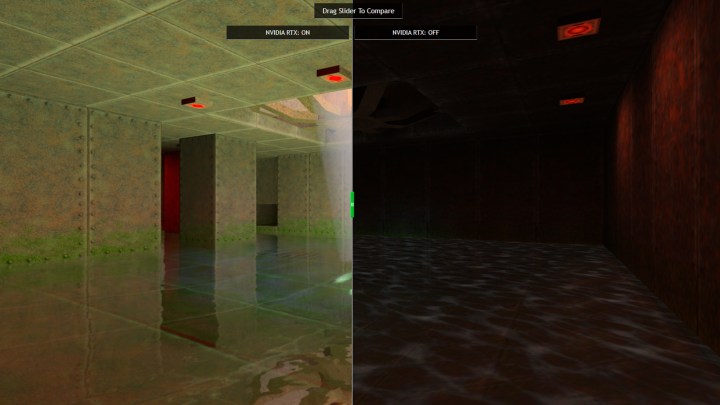
None of this is a problem in the sense that the original games are lost to time, but Nvidia is RTX-washing these old games to make something, anything that its next-gen graphics cards can sink their teeth into. It’s taking the most beloved of childhood memories and hoping that a nostalgia drip and a fresh coat of Captain Phasma suit paint will be enough to sway gamers to buy something that’s otherwise pretty redundant.
Realism isn’t always better
Ray tracing in games can look beautiful, I won’t argue with that. But it doesn’t always look better. Take the haphazard way it was implemented in Hitman 3. While the lighting there looks more realistic, it often loses the cinematic feel of the original game’s baked-in lighting. It sacrifices that developer intention in exchange for an (RTX) badge of realism, which nobody really asked for.
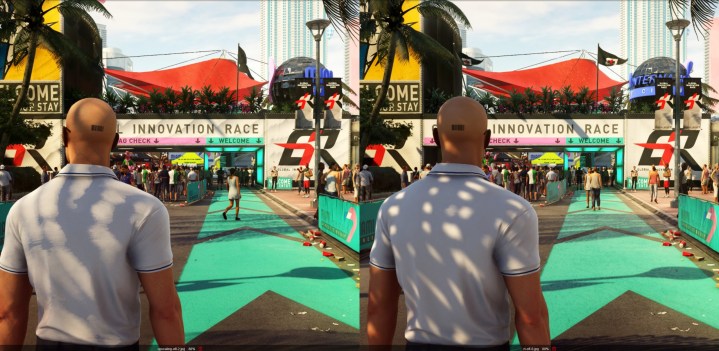
It’s the same way Lord of the Rings fans felt when getting their first glimpse of the high frame rate Hobbit movies. What was supposed to make them look and feel more realistic just made them look like soap operas. In a quest for greater fidelity, we lost the magic of what makes movies an escapist experience.
Nvidia is doing the same thing, and charging far more than a movie ticket for the “privilege.”
Not only do you have to pay out at least $900 for an RTX 4000 graphics card, but you lose so much of what made the original Portal great. Along with the disused coldness of the facility, Portal RTX also sacrifices some of the little lighting cues that would subtlety let you know where to place your portals. No need for those when we have realistic ray tracing. The checkerboard floor textures that hinted at the kind of high-speed maneuver you needed to do are gone too. The new (reflective) glass texture on the floor buttons makes them almost invisible in dark scenes, hindering puzzle progression.
Is all of that worth sacrificing for a game that has a more photorealistic look at first glance? For fans of the original game, it’s a resounding no.
But Portal RTX isn’t the kind of showcase that’s going to convince anyone, Portal fans or not.
Leave remix to the modders

It’s quite possible that Nvidia built Portal RTX to test out its RTX Remix tool and just decided to release it because it was kind of cool. Which it is, with all the aforementioned caveats considered. As a modding tool, RTX Remix is really exciting, and modders who respect the original game design choices are going to do some amazing work over the coming years to reinvent and revitalize some classics.
But without any flagship games to showcase it’s capabilities, Nvidia pitched Portal RTX as one of the main reasons to buy an RTX 4090. It showed it off in its vague performance graphs as an indicator of just how good the next-generation graphics cards were.
Considering our conclusion is that the RTX 4090 is a giant waste of money, I don’t think it succeeded.
But ray tracing still has heaps of potential. Games made with ray tracing in mind really do look stunning. Upcoming games like Plague Tale: Requiem would have been a good showcase of what the RTX 4000 cards can do. So where was it? S.T.A.L.K.E.R. 2 is coming next year. That’s got fancy ray traced lighting. Maybe that will be worth upgrading to an RTX 4000 GPU for. Maybe that could have been a good showcase.
But instead we got Portal RTX, and a version of Cyberpunk that can’t run on even the latest hardware unless DLSS makes up frames for it. It was a poor showing, and really highlights the strange position Nvidia is in, where it’s making hardware to add something to games that most people just aren’t sold on yet. Clearly, that’s at least partly because Nvidia hasn’t figured out how to sell it yet, either — espite it having had years to figure this out.
Portal RTX looks amazing, but Portal isn’t supposed to look amazing. Minecraft RTX looks gorgeous, but Minecraft’s not supposed to look like that either. Give us a playable Racer RTX. Until we get some actual new games, the RTX 4090 is going to continue feeling like a waste of power.




